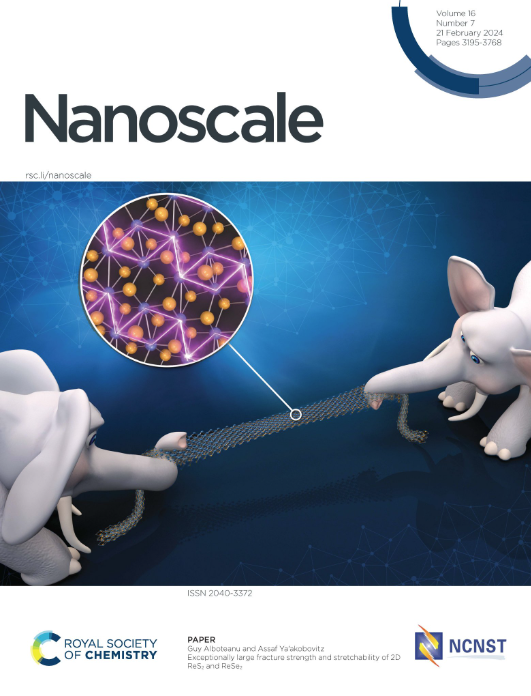聚甲基丙烯酸甲酯螺旋自组装引发碳纳米管分散
IF 5.1
3区 材料科学
Q1 CHEMISTRY, MULTIDISCIPLINARY
引用次数: 0
摘要
单壁碳纳米管(SWCNTs)是各种先进材料中很有前途的纳米填料,但由于其溶解度问题和混溶性差,其在商品塑料中的均匀分散仍然难以实现。在这里,我们证明了聚甲基丙烯酸甲酯(PMMA)作为一种有效的表面活性剂,在θ-溶剂条件下选择性分散小直径SWCNTs。溶剂质量对PMMA分层螺旋结构的形成起着关键作用,这使得swcnts的封装效率得以提高。此外,我们发现PMMA的立体规整性,特别是同时性,控制着基于纳米管直径的分散选择性。实验研究和DFT计算的结合表明,PMMA的动态螺旋构象产生了有利于SWCNTs包裹的纳米级空腔。这项工作为聚合物-纳米管杂交体的设计提供了重要的见解,并为在先进纳米复合材料中使用商品塑料开辟了新的途径。本文章由计算机程序翻译,如有差异,请以英文原文为准。
Dispersion of carbon nanotubes triggered by helical self-assembly of poly(methyl methacrylate)
Single-walled carbon nanotubes (SWCNTs) are promising nanofillers for various advanced materials, but their uniform dispersion in commodity plastics remains elusive due to solubility problems and poor miscibility. Here, we demonstrate that poly(methyl methacrylate) (PMMA) acts as an effective surfactant for the selective dispersion of small diameter SWCNTs under θ-solvent conditions. The solvent quality critically governs the formation of PMMA hierarchical helical structures, which enables efficient SWCNT encapsulation. Furthermore, we find that the stereoregularity of PMMA, in particular the syndiotacticity, controls the dispersion selectivity based on the nanotube diameter. The combination of experimental studies and DFT calculations reveals that the dynamic helical conformations of PMMA create nanoscale cavities that are conducive to the entrapment of SWCNTs. This work provides important insights into the design of polymer-nanotube hybrids and opens new avenues for the use of commodity plastics in advanced nanocomposites.
求助全文
通过发布文献求助,成功后即可免费获取论文全文。
去求助
来源期刊

Nanoscale
CHEMISTRY, MULTIDISCIPLINARY-NANOSCIENCE & NANOTECHNOLOGY
CiteScore
12.10
自引率
3.00%
发文量
1628
审稿时长
1.6 months
期刊介绍:
Nanoscale is a high-impact international journal, publishing high-quality research across nanoscience and nanotechnology. Nanoscale publishes a full mix of research articles on experimental and theoretical work, including reviews, communications, and full papers.Highly interdisciplinary, this journal appeals to scientists, researchers and professionals interested in nanoscience and nanotechnology, quantum materials and quantum technology, including the areas of physics, chemistry, biology, medicine, materials, energy/environment, information technology, detection science, healthcare and drug discovery, and electronics.
 求助内容:
求助内容: 应助结果提醒方式:
应助结果提醒方式:


